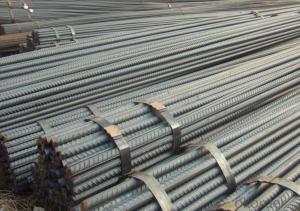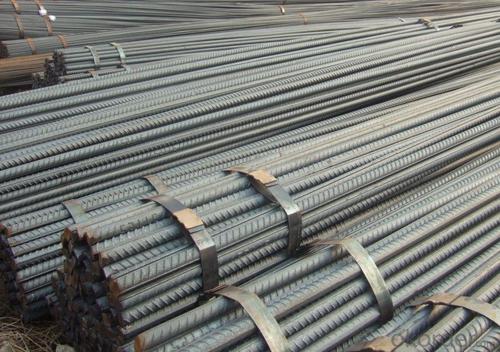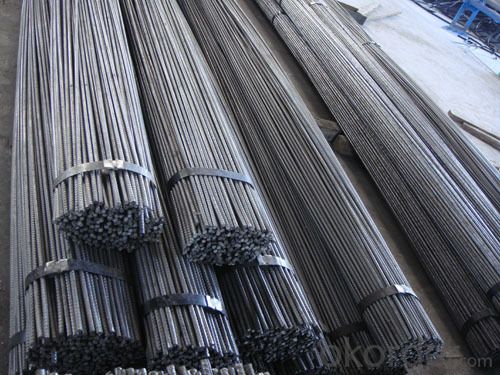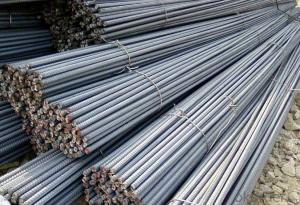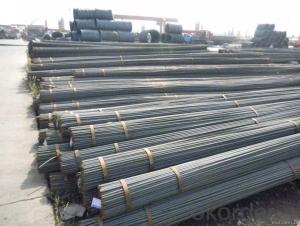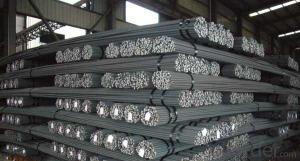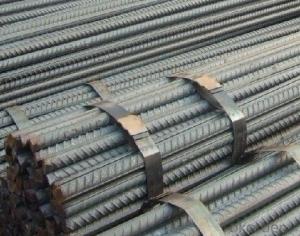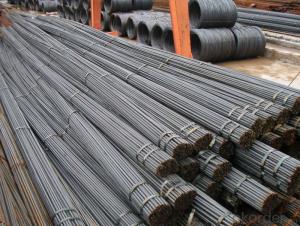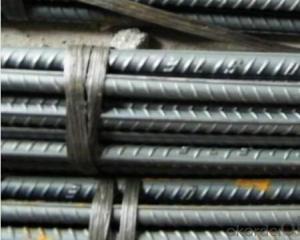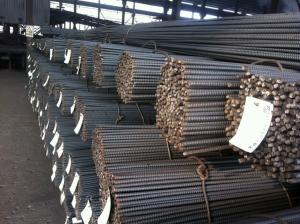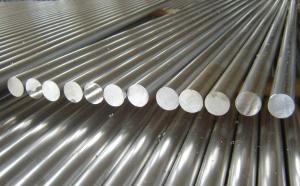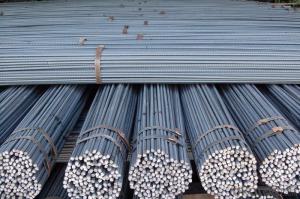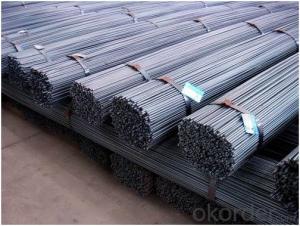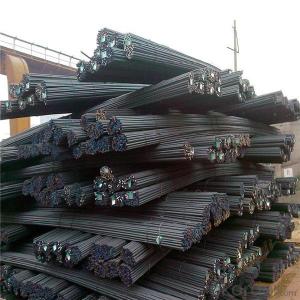Steel Deform Bar High Quality Steel,12mm ,HRB 500B Steel building Structural
- Loading Port:
- Tianjin
- Payment Terms:
- TT or LC
- Min Order Qty:
- 30 m.t.
- Supply Capability:
- 35000 m.t./month
OKorder Service Pledge
OKorder Financial Service
You Might Also Like
Product Specifications of Steel Deform Bar High Quality Steel,12mm ,HRB 500B Steel building Structural
Steel Deform Bar HRB 500B
1.China direct supplier
2.Best service
3.Competitive price
4.Quantity assured
Product Description Steel Deform Bar High Quality Steel,12mm ,HRB 500B Steel building Structural
| Name | High Quality Steel,12mm Steel Deform Bar,HRB 500B Steel building Structural |
| Standard | ASTM A615 /BS BS 4449 /GB HRB/ JIS G3112 |
| Grade | HRB500B |
| Diameter | 12mm-40mm |
| Length | 6-12m |
| Technique | Low temperature hot-rolling reinforcing deformed steel rebar |
| Tolerance | As the standard or as your requirement |
| Application | Building, construction, road, bridge,etc |
| Certificated | BV |
| MOQ | 500tons per size steel rebar |
| Packing details | Steel rebar packed in bundle or as your requirement |
| Delivery | Within 30 days after deposit |
| Payment | T/T or L/C |
Chemical Composition of Steel Deform Bar High Quality Steel,12mm ,HRB 500B Steel building Structural
Grade | Technical data of the original chemical composition (%) | |||||||
C | Mn | Si | S | P | V | |||
HRB400 | ≤0.25 | ≤1.60 | ≤0.80 | ≤0.045 | ≤0.045 | 0.04-0.12 | ||
Physics capability | ||||||||
Yield Strength(N/cm2) | Tensile Strength(N/cm2) | Elongation (%)
| ||||||
≥400 | ≥570 | ≥14 | ||||||
Theorectical weight of Steel Deform Bar High Quality Steel,12mm ,HRB 500B Steel building Structural
Diameter (MM) | Cross Sectional Area (MM2) | Theorectical Weight (KG/M) | Weight of 12M Bar (KG) | A Ton Contains 12M Bars (PCS) |
| 6 | 28.27 | 0.222 | 2.664 | 375.38 |
| 8 | 50.27 | 0.395 | 4.74 | 210.97 |
| 10 | 78.54 | 0.617 | 7.404 | 135.06 |
| 12 | 113.1 | 0.888 | 10.656 | 93.84 |
| 14 | 153.9 | 1.21 | 14.52 | 68.87 |
| 16 | 201.1 | 1.58 | 18.96 | 52.74 |
| 18 | 254.5 | 2 | 24 | 41.67 |
| 20 | 314.2 | 2.47 | 29.64 | 33.74 |
| 22 | 380.1 | 2.98 | 35.76 | 27.96 |
| 25 | 490.9 | 3.85 | 46.2 | 21.65 |
| 28 | 615.8 | 4.83 | 57.96 | 17.25 |
| 32 | 804.2 | 6.31 | 75.72 | 13.21 |
| 36 | 1018 | 7.99 | 98.88 | 10.43 |
| 40 | 1257 | 9.87 | 118.44 | 8.44 |
Product Picture of Steel Deform Bar High Quality Steel,12mm ,HRB 500B Steel building Structural
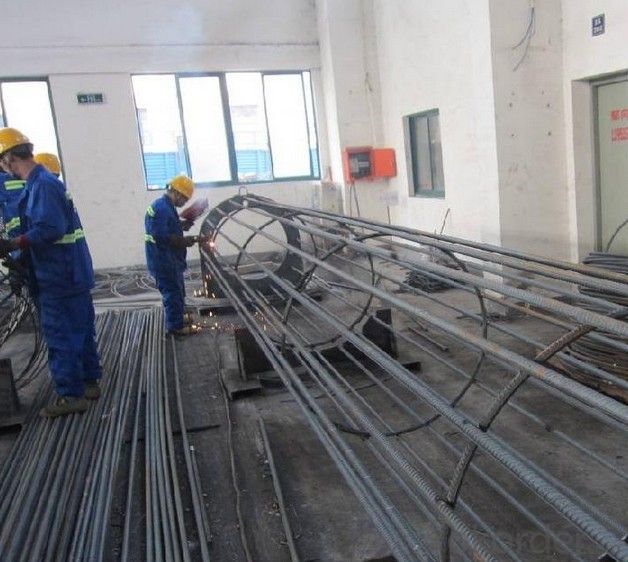
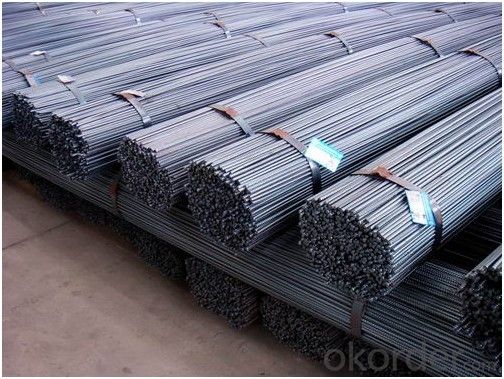
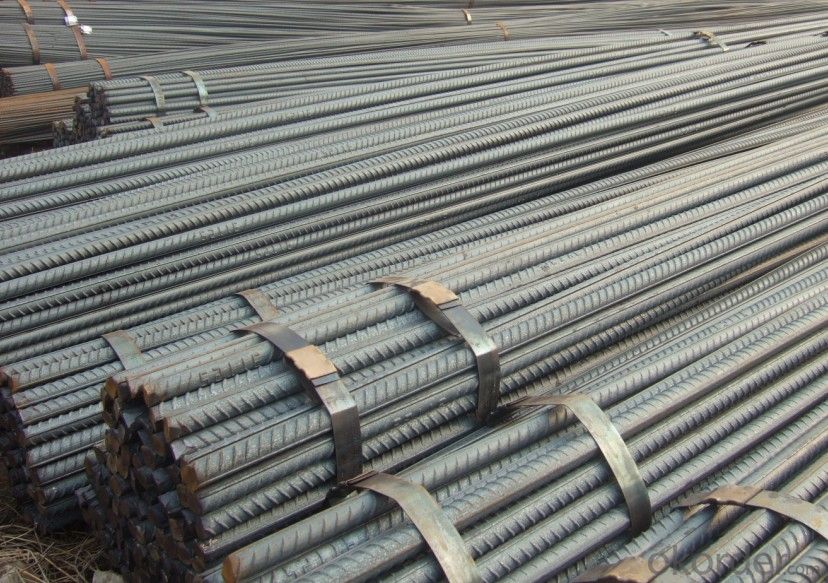
- Q: What is the role of steel rebars in the construction of sports arenas and stadiums?
- Steel rebars play a vital role in the construction of sports arenas and stadiums as they provide reinforcement and structural support to concrete elements such as columns, beams, and slabs. These rebars help enhance the overall strength and stability of the structures, ensuring they can withstand the heavy loads and stresses experienced in stadiums. Additionally, steel rebars also contribute to the durability and longevity of sports arenas by preventing cracking and structural failure caused by factors like vibrations, temperature changes, and seismic activity.
- Q: Can steel rebars be used in foundation structures?
- Yes, steel rebars can be used in foundation structures. Steel rebars are commonly used in reinforced concrete foundations to provide strength and structural integrity. They are used to reinforce the concrete and enhance its load-bearing capacity, making it suitable for supporting heavy structures and resisting forces like earthquakes and soil movement.
- Q: How are steel rebars connected or joined together during construction?
- Steel rebars are typically connected or joined together during construction by overlapping the ends of the rebars and tying them using steel wire or using mechanical couplers.
- Q: What is the effect of moisture on steel rebars?
- The effect of moisture on steel rebars can lead to corrosion, which weakens the rebars and reduces their structural integrity over time. Moisture can initiate the oxidation process, causing the rebars to rust and potentially compromise the stability of reinforced concrete structures. Regular inspection and maintenance are crucial to prevent and address any moisture-related damage to steel rebars.
- Q: How do steel rebars affect the overall ductility of concrete structures?
- Steel rebars significantly enhance the overall ductility of concrete structures. Ductility refers to the ability of a material to deform without fracturing when subjected to stress. In the case of concrete structures, the addition of steel rebars provides an essential mechanism for absorbing and redistributing tensile forces. Concrete is an excellent material for compression, but it is weak in tension. The presence of steel rebars within the concrete matrix allows it to resist tensile forces effectively. When a tensile force is applied to a concrete structure, the rebars bear most of the load, preventing the concrete from cracking or failing. This redistribution of stress helps to increase the overall durability and strength of the structure. Furthermore, steel rebars enhance the ductility of concrete structures by providing a warning sign before failure. As the tensile strength of the rebars is exceeded, they tend to elongate and deform, indicating that the structure is approaching its limit. This warning allows for timely repairs or reinforcement, preventing catastrophic failures. Another crucial aspect of steel rebars in enhancing ductility is their ability to bridge cracks in concrete. When a crack occurs, the rebars act as a reinforcement that spans across the crack, preventing it from propagating further. This bridging effect helps to maintain the integrity of the structure and allows for easier repair or rehabilitation. Overall, the inclusion of steel rebars in concrete structures significantly improves their ductility by enhancing tensile strength, providing warning signs before failure, and bridging cracks. This increased ductility ensures that the structures can withstand various loads, including seismic events and dynamic forces, while maintaining their structural integrity.
- Q: What are the guidelines for storing steel rebars on a construction site?
- To ensure safety and maintain the quality of steel rebars stored on a construction site, it is important to follow several guidelines. Here are some key recommendations: 1. Choose a designated area on the construction site that is flat, clean, and well-drained for storing the rebars. Avoid areas that are prone to flooding or excessive moisture. 2. Elevate the rebars above the ground using wooden or concrete blocks to prevent direct contact with soil or water. This will help prevent rusting and corrosion. 3. Stack the rebars in a stable manner, aligning them vertically and horizontally to maintain their shape and prevent bending or warping. Use spacers or crates between layers to ensure proper spacing and prevent entanglement. 4. Protect the rebars from the elements by covering them with a waterproof tarp or plastic sheet. This will shield them from rain, snow, or excessive sunlight and prevent rusting and degradation. 5. Store different sizes and types of rebars separately to avoid mixing or confusion during construction. Clearly label and mark each stack to identify the type, size, and grade of the rebars. 6. Organize the rebars in a logical manner to provide easy access for construction workers. Place smaller rebars on top for easy retrieval and avoid storing heavier rebars on top of lighter ones to prevent damage. 7. Take safety precautions by maintaining a safe distance between the rebars and any heavy machinery or equipment to minimize the risk of accidents. Secure the rebars properly to prevent them from falling or causing injury. 8. Regularly inspect the rebars for any signs of damage, rust, or corrosion. Replace or repair any compromised rebars to avoid compromising the structural integrity of the construction project. By following these guidelines, construction sites can ensure the proper storage of steel rebars, promoting safety, efficiency, and the longevity of the rebars.
- Q: What are the guidelines for handling and disposing of steel rebars after demolition?
- The guidelines for handling and disposing of steel rebars after demolition typically involve several steps. Firstly, the rebars should be carefully removed from the demolished structure using appropriate tools and equipment to ensure worker safety. Once removed, the rebars should be inspected for any damages or contaminants that may affect their reuse or recycling potential. If the rebars are in good condition, they can be cleaned and stored for future use in construction projects. However, if they are damaged or cannot be reused, they should be properly recycled. This involves sorting them based on their grade and size before sending them to a recycling facility. If recycling is not possible, the rebars should be disposed of in a designated landfill or waste management facility following local regulations and guidelines to minimize environmental impact. It is crucial to follow these guidelines to promote sustainable practices and reduce waste in the construction industry.
- Q: Are there any specific guidelines for storing and handling steel rebars?
- Yes, there are specific guidelines for storing and handling steel rebars. These guidelines typically include storing rebars on a flat surface to prevent bending and distortion, keeping them off the ground to prevent rusting, and protecting them from moisture and exposure to chemicals. Additionally, rebars should be handled with care to avoid any damage or injury, and they should be stored in a well-organized manner to ensure easy identification and retrieval.
- Q: How do steel rebars affect the overall creep and shrinkage of concrete structures?
- Steel rebars have a significant influence on the overall creep and shrinkage of concrete structures. The presence of rebars helps to control and minimize the shrinkage of concrete by providing restraint and reducing the amount of drying shrinkage. Additionally, rebars contribute to the overall stiffness of the structure, decreasing the potential for creep deformation over time. Therefore, steel rebars play a crucial role in mitigating both creep and shrinkage in concrete structures, ensuring their stability and durability.
- Q: How are steel rebars tested for quality and compliance?
- Steel rebars are tested for quality and compliance through a series of rigorous methods. These include visual inspection to check for any physical defects, such as surface imperfections or cracks. Additionally, rebars undergo chemical analysis to ensure they meet the required composition and strength specifications. Mechanical testing is conducted to assess the rebars' tensile strength, yield strength, and elongation properties. Another crucial test is the bend test, which evaluates rebars' ability to withstand bending without breaking or cracking. Overall, these various tests help ensure that steel rebars meet the necessary quality and compliance standards for their intended applications.
Send your message to us
Steel Deform Bar High Quality Steel,12mm ,HRB 500B Steel building Structural
- Loading Port:
- Tianjin
- Payment Terms:
- TT or LC
- Min Order Qty:
- 30 m.t.
- Supply Capability:
- 35000 m.t./month
OKorder Service Pledge
OKorder Financial Service
Similar products
Hot products
Hot Searches
Related keywords
